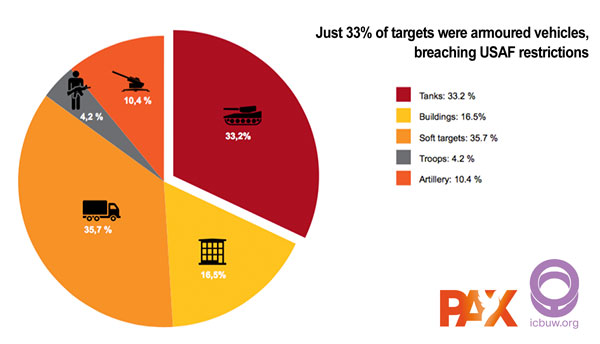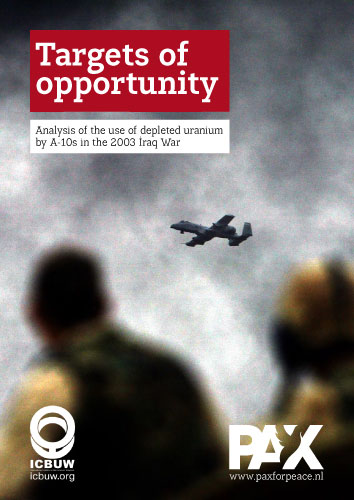The United States military ignored its own guidelines for the use of depleted uranium ammunition in the 2003 Iraq War, firing the controversial weapons at unarmoured targets, buildings in populated areas and troops. These are the conclusions of an analysis of recently declassified military data.
The analysis also reveals that the number of sites known to be contaminated in Iraq has now tripled, to more than 1,000, even as fears grow that the US has used depleted uranium in Syria.
The targeting data from US A-10 aircraft, released under a freedom of information request, accounts for nearly half of all depleted uranium ammunition that the US and the United Kingdom have acknowledged firing during the conflict. Analysis by the Dutch peacebuilding organisation PAX, and the International Coalition to Ban Uranium Weapons (ICBUW), and published in the report ´Targets of opportunity´, shows that depleted uranium use was widespread across Iraq during the first month of the 2003 invasion.

For the first time, the analysis reveals that the majority of targets attacked with the radioactive and chemically toxic weapons were not armoured. This runs counter to claims by the US that this ammunition is specifically used for destroying tanks and other armoured vehicles. A significant number of the depleted uranium rounds were also fired in or near populated areas, increasing the likelihood that civilians would be exposed.
Lack of transparency
While the UK released information to the UN on where it fired depleted uranium, the US is still withholding data on where it fired a far larger amount of the weapons, hampering clearance work. PAX has reported that Iraq continues to struggle with the identification and remediation of sites contaminated by depleted uranium, and the country has called for assistance in doing so from the international community.
“With the current burden of fighting the Islamic State, the Iraqi government’s capacity is already stretched. But people are worried about contamination by depleted uranium, especially in southern Iraq,” says one of the report’s authors, PAX’s Wim Zwijnenburg. “The US did too little, too late, and now Iraq’s people are facing layer upon layer of toxic health risks as a result of the conflicts.”
Depleted uranium in Syria
In early 2015, the US stated – contrary to previous claims – that it had not and would not use depleted uranium in Iraq or Syria in operations against Islamic State. However information obtained by ICBUW suggests that US has used depleted uranium on at least two occasions in Syria.
ICBUW and PAX are calling for urgent clarification from the US authorities on when it has used depleted uranium, and on its depleted uranium policy for the conflict in Syria. In addition, US authorities should swiftly release detailed targeting data to ensure that the relevant authorities can conduct clearance and risk awareness efforts and isolate and recover contaminated material.
“At present countries that use depleted uranium weapons, or are affected by them, are under no formal obligations to clear contamination after conflicts in order to minimise the risks it poses to civilians,” said co-author Doug Weir from ICBUW. “This is in stark contrast to land mines, cluster munitions and other explosive remnants of war. Governments must take steps to meaningfully address the legacy from depleted uranium and other toxic remnants of war that can harm civilians and their environment for years after the end of conflicts.”
A new resolution on depleted uranium weapons will be voted on by governments at the UN General Assembly later this month.
Download the report Targets of opportunity.
The documents released under the Freedom of Information request, on basis of which the analysis was made, can be found here:
US FOIA depleted uranium documents 1
US FOIA depleted uranium documents 2
PAX has transferred all firing coordinates from the documents into this Excel sheet:
Overview of A10 targeting data Iraq 2003 based on FOIA documents
For more information on the work of PAX and ICBUW see: paxforpeace.nl and icbuw.org




